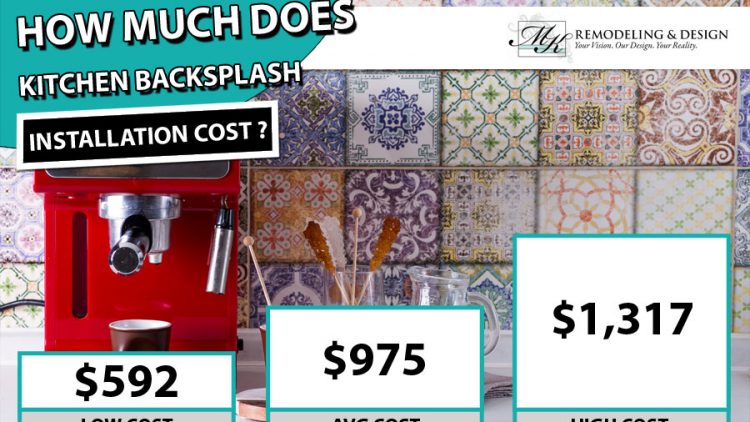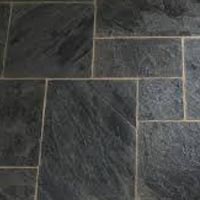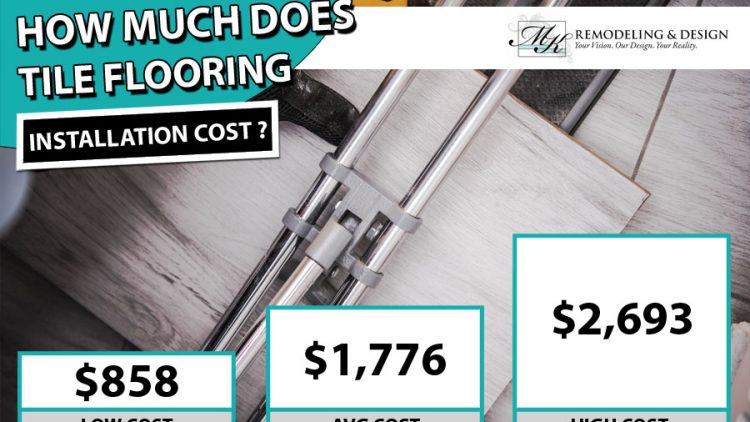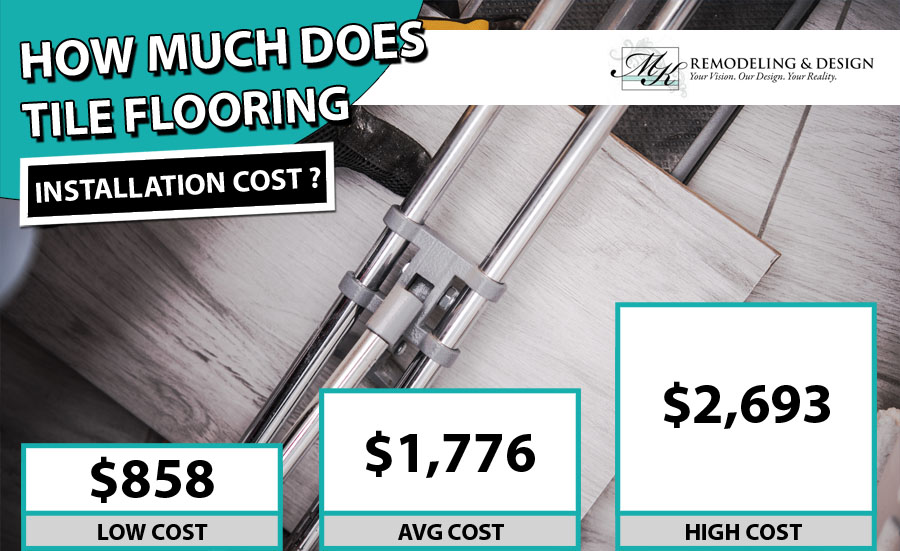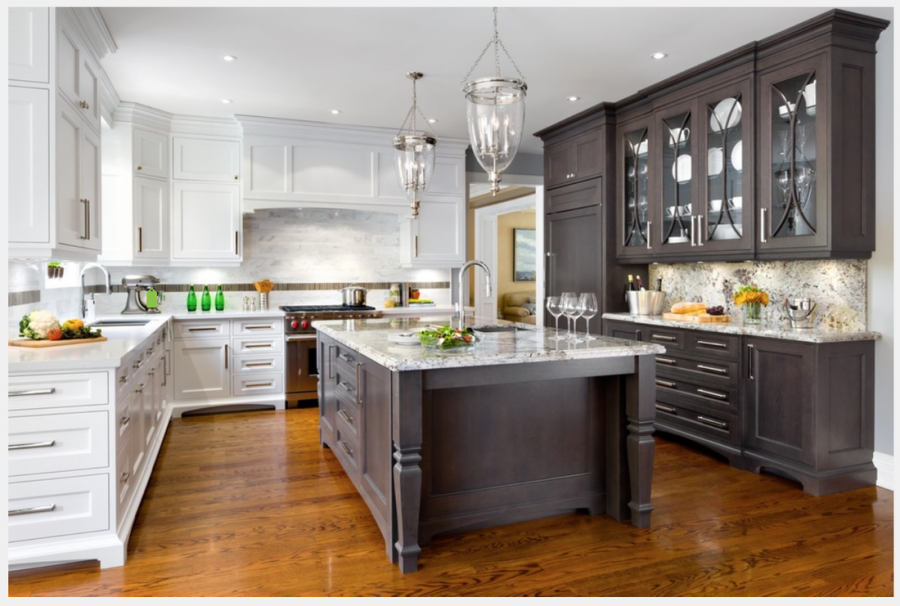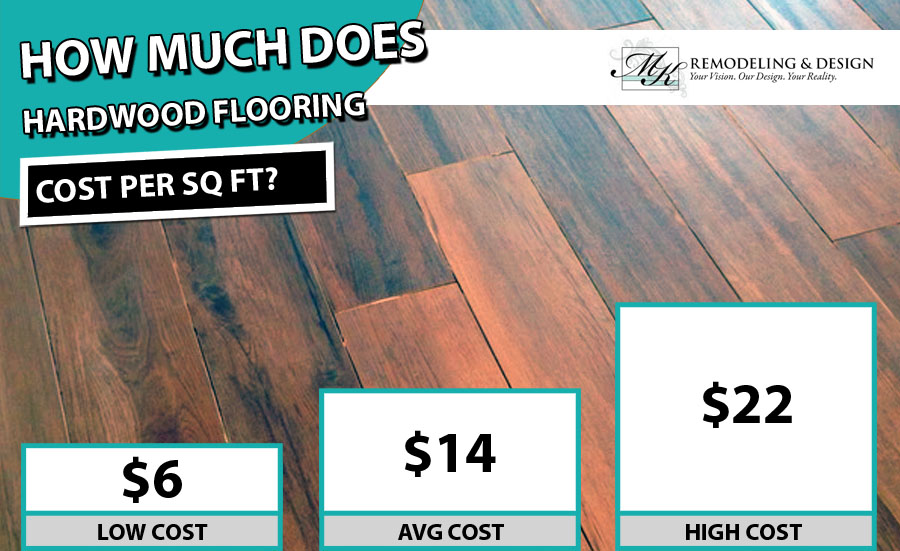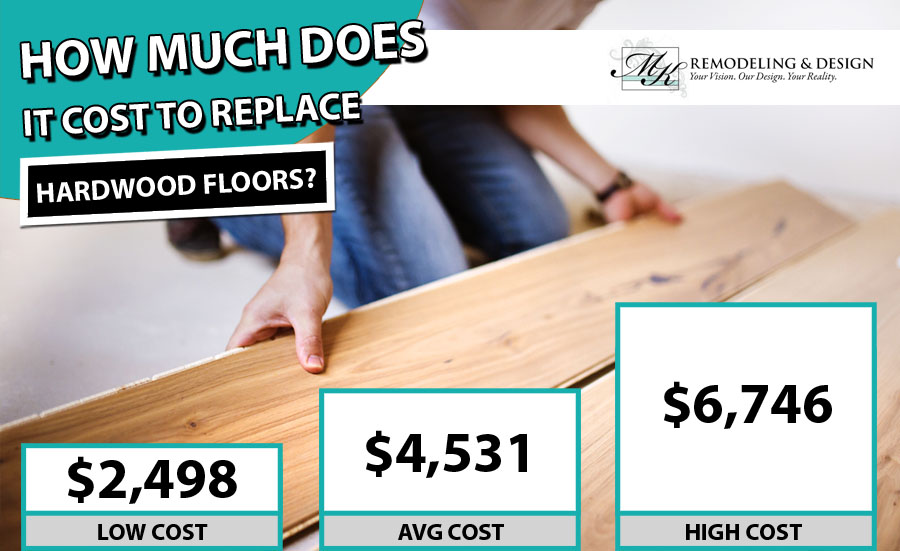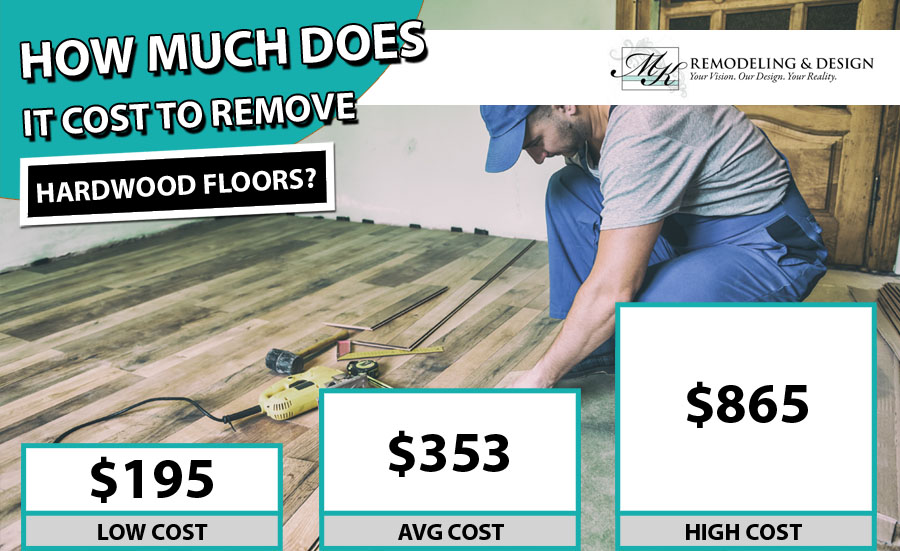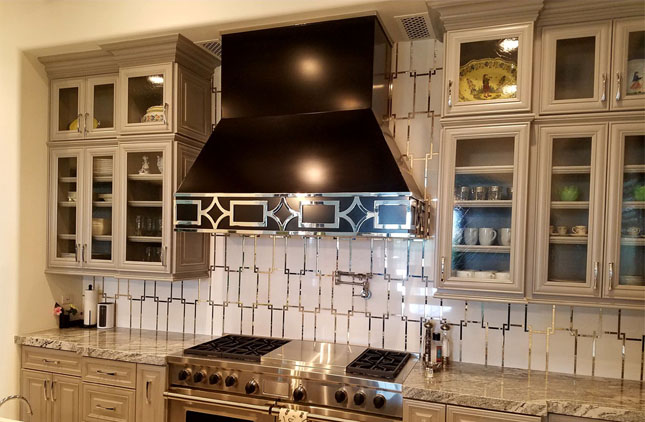Kitchen Backsplash Installation Costs 2023
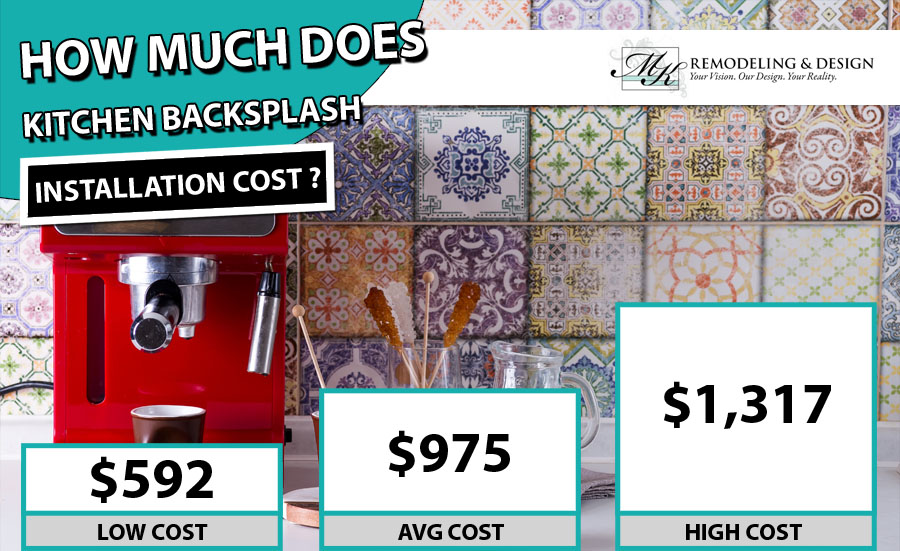
How Much Does a Tile Backsplash Cost? Kitchen tile backsplashes costs about $975 with average prices of installation ranging from $592 to $1,317 in the US for 2023, according to HomeAdvisor. The average cost per sq ft for a tile backsplash installation is about $31 with average prices ranging from $25 per sq ft to $36 per sq ft. Disclaimer – This is not an actual quote. Contact MK Remodeling today to get a quote for your project.
Cost to Install a Kitchen Backsplash By Type Of Tile
Ceramic:
- $25 Per Sq. Ft.
- 20 sqft: $592 Per Sq. Ft.
- 30 sqft: $812 Per Sq. Ft.
- 40 sqft: $1,032 Per Sq. Ft.
Stone:
- $30 Per Sq. Ft.
- 20 sqft: $630 Per Sq. Ft.
- 30 sqft: $870 Per Sq. Ft.
- 40 sqft: $1.240 Per Sq. Ft.
Glass:
- $32 Per Sq. Ft.
- 20 sqft: $646 Per Sq. Ft.
- 30 sqft: $849 Per Sq. Ft.
- 40 sqft: $1,141 Per Sq. Ft.
Stainless Steel:
- $36 Per Sq. Ft.
- 20 sqft: $734 Per Sq. Ft.
- 30 sqft: $1,141 Per Sq. Ft.
- 40 sqft: $1,317 Per Sq. Ft.
Deciding Cost Factors Of Kitchen Backsplash Installation
- How Much Tile You Need: Some countertops come with tile installed, but a lot of people need a backsplash too.
- How Complex The Cuts Are: Angles, hard to get to spaces, and a pattern requiring a lot angle cuts would increase the cost.
- Cutting Around Electrical Outlets: Cutting around light fixtures and electrical outlets can increase the price.
- Material Transportation Costs: Some vendors transfer material costs to buyers.
- Contractor Rate Changes: Contractor costs can fluctuate as the seasons change.
Kitchen Backsplash Labor Costs
The average cost to install a kitchen backsplash is $40 to $60 per hour. Peel-and-stick installations are simpler and would rate closer to $40 per hour. If you opt for more detailed design, your pro may quote a higher rate.
Average Cost of Kitchen Backsplash Prices Per Square Foot
- Ceramic: $2 Per Sq. Ft.
- Mid-Range Ceramic: $3-$5 Per Sq. Ft.
- Porcelain: $3-$6 Per Sq. Ft.
- Slate: $5 Per Sq. Ft.
- High-End Marble or Granite: Per $7-$10 Sq. Ft.
- Glass: $7-$30 Per Sq. Ft.
- Metal: $15-$25 Per Sq. Ft.
- Stainless Steel: $20 Per Sq. Ft
Kitchen Backsplash Cost
The average cost for a kitchen backsplash is around $400 to $600 Per 16 Sq. Ft., not counting labor costs. You could pay about $300 to $400 Per 16 Sq. Ft. for less expensive ceramic types, or between $650 and $1,000 Per 16 Sq. Ft. for higher-quality types. Expect to spend more than $1,000 Per 16 Sq. Ft. for stylish designs like a tile mosaic.
Bathroom Backsplash Cost
Installation for these averages around $1,000 but you can expect to pay between $600 and $1,350. Pricing does not differ from room to room. A bathroom backsplash is a considerable factor in the cost to retile a bathroom or shower enclosure.
DIY vs. Hiring a Professional Tile Contractor
A contractor could charge you a minimum fee of $160, plus $10 per square foot, in addition to your material costs. They can also charge up to $40 to $60 per hour for labor. While this may seem expensive, hiring a professional is the safest and fastest way to get the job done with the negligible waste. Your walls may require special cleaning and prep before tiling — particularly if you have to remove your old tile first. Professionals will have the tools and experience to take on the whole job quickly.
Cost to Remove A Backsplash
The cost to remove tile from a backsplash could range from $300 to $650. The average cost for the removal of a backsplash is $3 to $6 Per Sq. Ft. You could also end up paying up to $100 to $150 for the old tile disposal. The disposal size typically will determine your quote.
GET A KITCHEN BACKSPLASH INSTALLATION QUOTE IN MESA TODAY!
Are you thinking about installing a kitchen backsplash in Mesa, Arizona? MK Remodeling offers professional and affordable kitchen backsplash installation services in many areas of the Phoenix, Arizona area.

